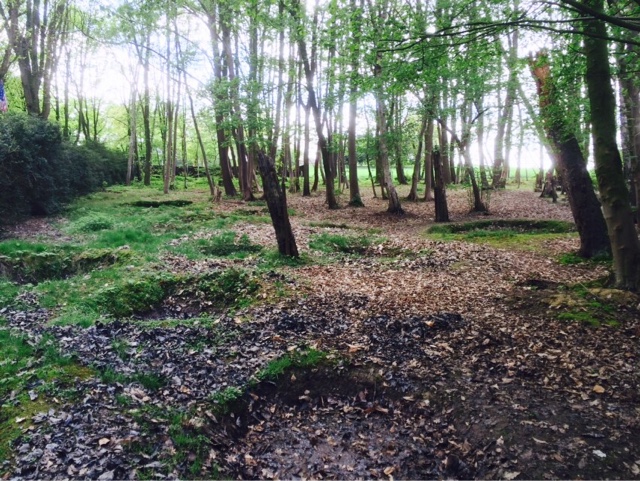I could go on for hours about this and bore everyone to tears. Suffice it to say I've visited the grave of Reginald Parrott, and in fact had a picnic with him and Laddie Millen at their graves in the Kemmel Chateau Cemetary.
I then rode my bicycle on past the St. Eloi and Messines craters. In the end I made to the Hooge Crater.
There I sought the general area of the "appendix" and "the loop" where my grandfather had been on June 2, 1916. By his account the Germans had been 35 yards away. Sure enough, when I passed up the slope I soon discovered three German bunkers… And two old shell casings. Subsequent wanderings gave me a very clear sense of the shape and topography of the land as it related to the old and new maps I had. By then it became abundantly clear that this pastoral setting was a very small space where many men fought in terror and died. Those who didn't die escaped by the skin of their teeth in the Battle of Sanctuary Wood.
I have a photograph of my grandfather in 1922 revisiting the culvert. I found this where you would expect, on the Menin Road, with the land at a low point and a stream passing beneath. This was just down the road from the at the Hooge mine crater, a lovely setting now next to an amusement park!
Looking back across the battleground as I rode down Canadalaan I saw for a moment swarms of soldiers running through the field. But then I realize these were children from school group swarming through the many white markers of the Hooge Crater Cemetery.
I was constantly struck by the present and the past, but now look at the photographs with the knowledge of the colour of the sky, the greenest of the grass, and, yes, the poppies in Flanders fields. I know the look of the earth and the rich thickness of grass when it is allowed to grow. Everything that one sees in sepia images suddenly has the immediacy of a spring day for the past was touched with a sense of those present moments that existed once, and must remain in the memories forever with the same vitality of our present day.





























